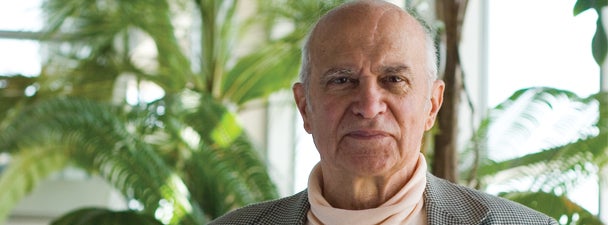Perhaps the most important lesson of George Rabb’s career thus far has been that, if you’re going to make a difference, you need people who care and that, to make people care, you must get to them at a young age. Indeed, George Rabb ’51 attributes his own lifelong dedication to wildlife and conservation to the young age at which he started caring about the natural world.
Having grown up in the 1930s and 1940s, Rabb recalls tromping around in what were then the swamps of the Bees Ferry area, biking through Francis Marion National Forest and cultivating a general appreciation for Charleston’s natural surroundings. However, he credits E. Burnham Chamberlain, then-curator at The Charleston Museum and coauthor of South Carolina Bird Life, with developing his initial love of nature into a true commitment to it. “Burnham was really a marvelous mentor,” Rabb says. “He was a champion of conserving the wildlife of the Lowcountry.”
Not only that, but it seems that Chamberlain also became proof of Rabb’s contention that introducing children to the wonders of nature in a meaningful way can instill in them a true sense of allegiance and responsibility toward the world’s other creatures. With the inspiration he gathered from Chamberlain – as well as that which he gained from Robert Coleman, amateur mammalogist and professor of mathematics at the College, where Rabb studied biology – Rabb went on to become a leader in the conservation of natural habitats and their inhabitants as well as in the transformation of zoos into centers of conservation and population management.
 Nowadays, Rabb is a respected spokesman on wildlife conservation issues, particularly those involving amphibians, and has earned numerous honors and awards for his conservation efforts. Before he gained prestige, however, Rabb was just getting started as a curator of research at Chicago’s Brookfield Zoo when he “had the enlightening revelation that there was a place for wildlife conservation within the zoological community.”
Nowadays, Rabb is a respected spokesman on wildlife conservation issues, particularly those involving amphibians, and has earned numerous honors and awards for his conservation efforts. Before he gained prestige, however, Rabb was just getting started as a curator of research at Chicago’s Brookfield Zoo when he “had the enlightening revelation that there was a place for wildlife conservation within the zoological community.”
As Rabb continued his work at the Brookfield Zoo, of which he eventually became the director – a post he held for 27 years – he never lost sight of this understanding of the role zoos play in conservation.
“It became more obvious as I went along,” he explains. “You can work with officialdom and agencies and government, but you have to have people buy in – all different kinds of people. That’s why zoos are so important. There’s a great variety of visitors – and it becomes the responsibility of the zoo to encourage those people to care about the creatures of the world.”
With this in mind, Rabb set out to make the Brookfield Zoo a center not only of conservation, but also of education – effectively changing the face of zoos nationwide. He developed the Brookfield Zoo Education Department as well as its various educational exhibits. “The idea is to get children to experience caring for other creatures at a very young age,” he says. “Getting them to care in that fashion will help them make decisions that are mindful of other creatures throughout their lives.”
Although he worked at the Brookfield Zoo for almost 50 years, Rabb’s career was anything but static. In fact, part of his job was traveling the world, gathering information for exhibitions about the okapi of the Democratic Republic of the Congo, the hairy-nosed wombat of South Australia, the primates of Uganda, and so forth.
Having published more than 60 studies and articles based on his field, museum and zoo research, Rabb also has affiliations with conservation organizations worldwide. Most notably, he served as chairman of the Species Survival Commission of the International Union for the Conservation of Nature for seven years. In addition, he serves as vice president of Fauna & Flora International, president of Chicago Wilderness Magazine and chair of Illinois State Museum’s board of directors.
Rabb participates in all of these organizations with the same goal in mind. “The rebirth of animal behavior as a science. When you study animal behavior, you pick up on something that is part of our nature, and that is altruism,” he contends, “meaning we extend ourselves to awareness of the plight of the very existence of other creatures.”
Being aware of and caring about other creatures is one thing; actually making a difference is quite another. Rabb suggests that those who care should “make their representatives aware that they are concerned. If they can contribute or volunteer, wonderful, but a major way for everyone to help is letting public representatives know that they care.”
As for Rabb, he continues on his crusade to arouse awareness and involve people from all over the world. “If we care about the future of our species, we better care about other creatures,” he states. “And if we care about other creatures, then we better care about involving more people.”
And that is exactly what Rabb has done and continues to do.
– Alicia Lutz ’98
Photo by Loren Bridges Germeroth ’04




